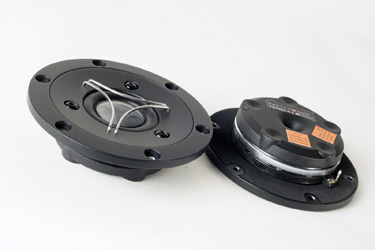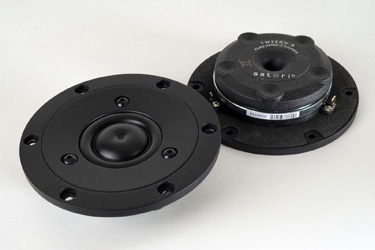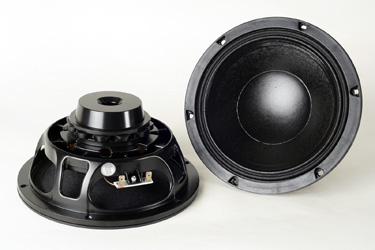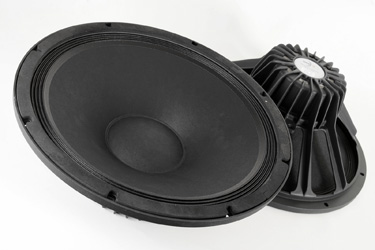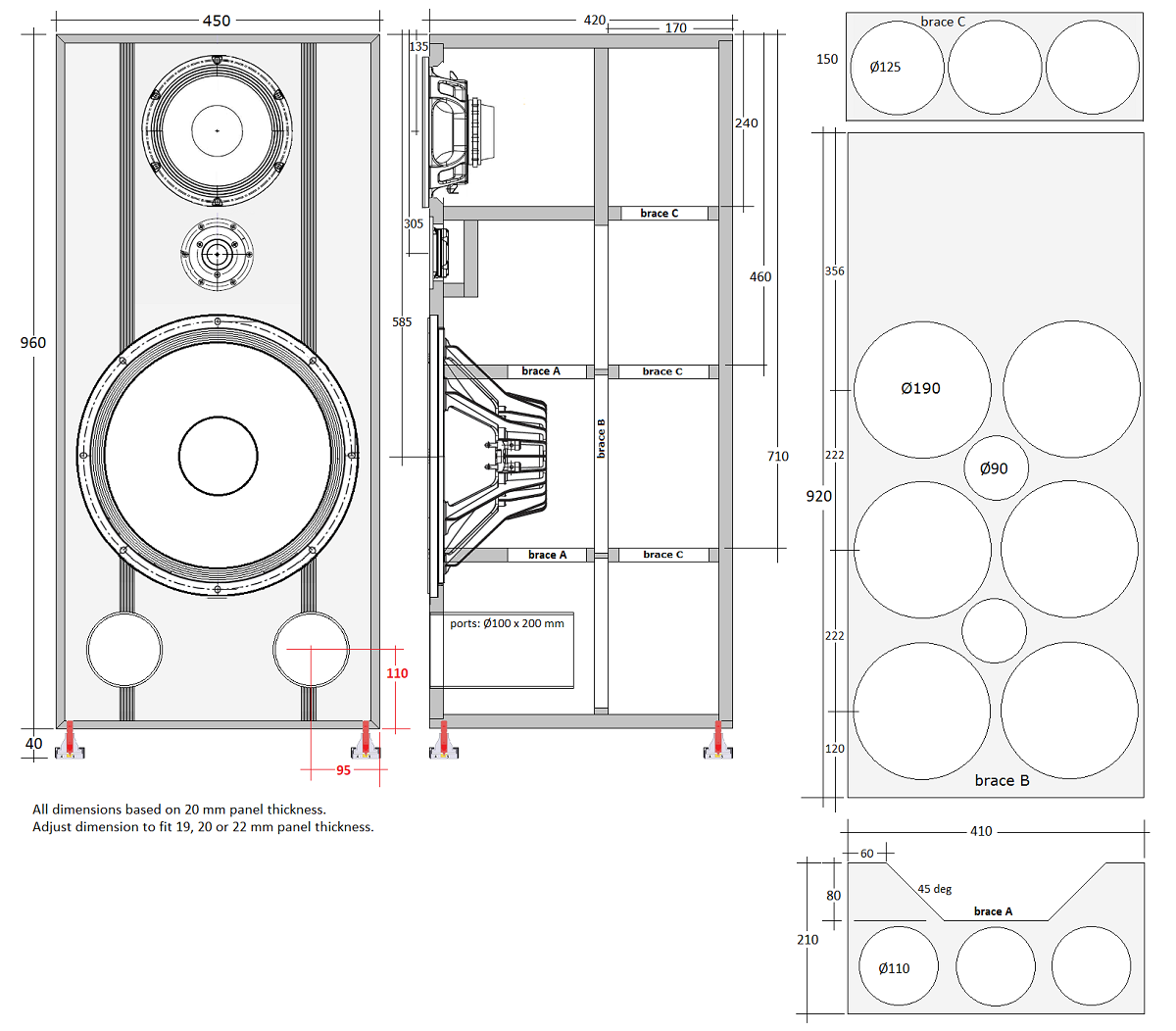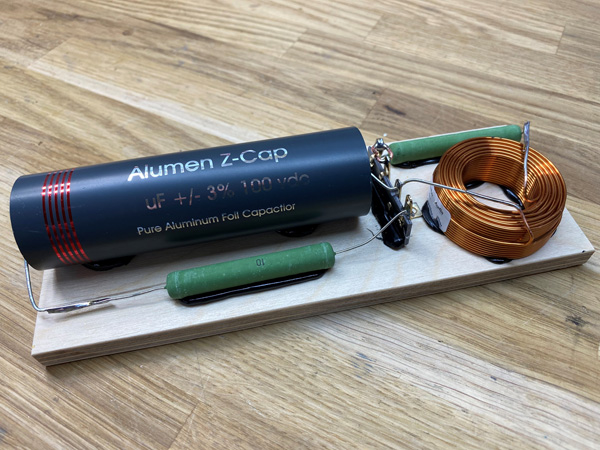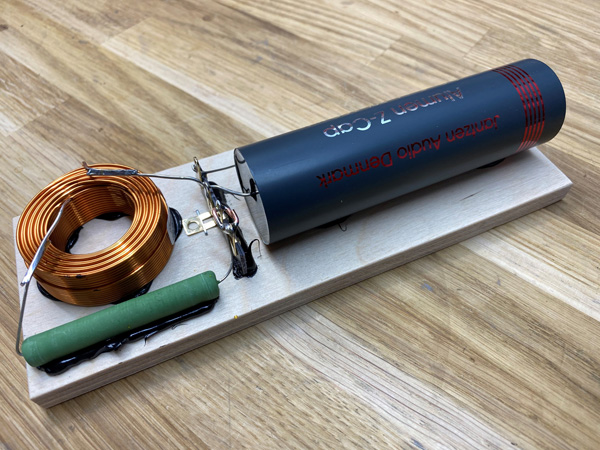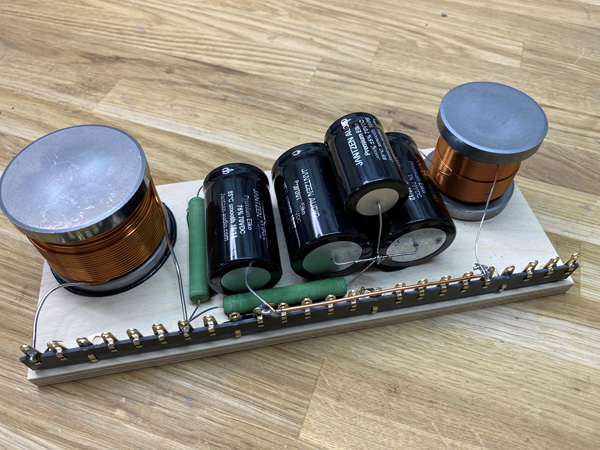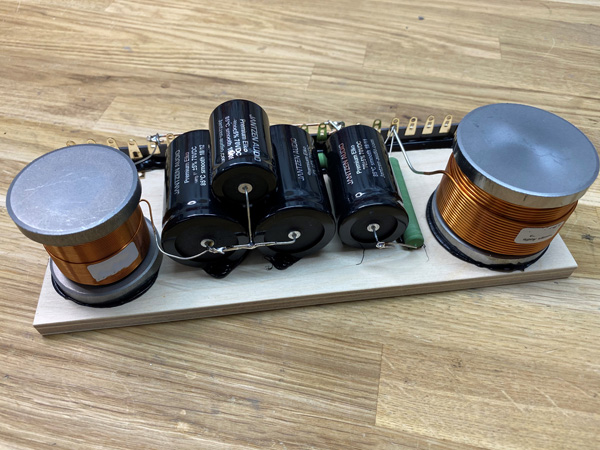Faital 3WC-15
Copyright 2022 © Troels Gravesen
Go to on this page:
DRIVERS
CROSSOVER
CABINET
MEASUREMENTS
SPEAKER-KIT
CROSSOVER LAYOUT
FAITAL-3WC-15 builders
High efficiency becomes addictive. When we reach some 94-96 dB efficiency (1 watt, 1 meter) things start to happen we hadn't notice before. The rim shot of the drummer, the lightness of bass, the brassiness of brass, etc. Dynamics are a crucial quality of all music. Most of us never have it at home due to many reasons, mostly size, because high efficiency takes space - that is, if we want some decent bass also. Speakers must be big and should you come around a small speaker claiming high efficiency, you can be sure the manufacturer exaggerate specifications - or the speaker really doesn't play much bass below 100 Hz. We can't fool the laws of physics, we can't fool acoustics.
The Faital 3WC got a surprisingly good reception and kits have been sold like hot cakes. Actually the fastest selling kit ever! At least some people don't have size as a constraint. So, let's crank it up a notch and make a serious Three-Way Classic by using a 15" bass driver and raise efficiency another 2-3 dB to make around 95-96 dB/2,8V/1 meter. For a commercial speaker this would mean at least 98 dB when room-gain, the date and your age is added to the SPL figure. Speaking volume, the cabinet here makes some 180 litres gross volume, where the 12" version was only 102 litres. 96 x 45 x 42 cm is not a small speaker.
I've used the Faital 15PR400 before on my OBL-15 and it's a great driver with a healthy ~95 dB sensitivity, even on an open baffle. In addition to this a very good frequency response making low-order filters feasible. This Faital 15" is going to be the solid foundation of this construction. And another good thing is price.
Midrange? Well, looking through the portfolios of 18 Sound, B&C, BMS,
Faital and others I ordered four different midrange drivers that looked
promising with regard to frequency response and sensitivity, actually four 8" drivers
and one 6" driver. The report can be read
here.
Testing the drivers on a baffle intended for this construction, I picked
two of these for further testing after making proper crossovers, and the
final choice was the
18 SOUND 8NMB420 having a smooth frequency response,
high efficiency, simplest crossover - although not the cheapest in
the lot (126£/ea). Oh yes, and it sounds
really well too. Drivers may have all the basic qualities - but not
necessarily sound good due to cone material, cone shape and a whole lot
of other
things. All cone materials have a sonic signature and how the cone and
surround are
executed may play a key role too in how the driver actually sounds.
Stiffness and self-damping being the key parametres in sound quality.
From the data sheet:
"The curvilinear paper cone is formed using a unique wood pulp
composition designed to achieve the best possible rigidity and
stiffness. The 50mm inside outside aluminum voice coil employs
Interleaved Sandwich Voice coil (ISV) technology. It is composed by a
high strength fiberglass former used to carry windings on both the outer
and inner surfaces to achieve a mass balanced coil. This results in an
extremely linear motor assembly which, in conjunction with the highly
advanced design of the magnetic structure, provides a high force factor
or BL."
Very few manufacturers would go this far and use a voice coil wound
on both sides of the voice coil bobbin. I'm impressed.
For tweeter I picked an old friend I've used many, many times, the SBAcoustics TW29RN-B-8. And the great thing is that should you have the hots for a Be dome, the TW29BN-B-8 can be used with the same crossover. Not always the case, but here it works. There will be kits with either tweeter.
What I said about the sound of the
Faital 3WC (read intro) goes for the Faital 3WC-15 - and then a bit
more. Bigger drivers means less cone movement for the same SPL and it
equals less distortion. Size matters.
I do have to say that the midrange transparency of this 18 SOUND
midrange is nothing short of phenomenal. It took a few hours to open up,
but then... my Goodness, this driver together with the 15" bass just
does something. The Be dome may add a little increase in delicacy and
transparency, but it's icing of the cake. The TW29RN does very well
indeed. The jump from fabric to Be here is less of a difference than it
was for the Faital 3WC, where the Be dome made a significant increase in
quality from the 9130 dome.
I was excited to learn what the 15PR400 would do here in a vented
cabinet. I only knew the driver from my open baffle speaker, OBL-15, and
it's kind of a light-weight bass driver, meant for dynamic bass, but not
subwoofer quality. Well, it goes much deeper than expected and I know
this when my workshop door-fillings start rattling - and this even from
my EAR-869, 15 wpc amp. My initial measurements of the bass drivers
suggested 97 dB sensitivity, but I think we conservatively should rate
this speaker as a 95-96 dB speaker.
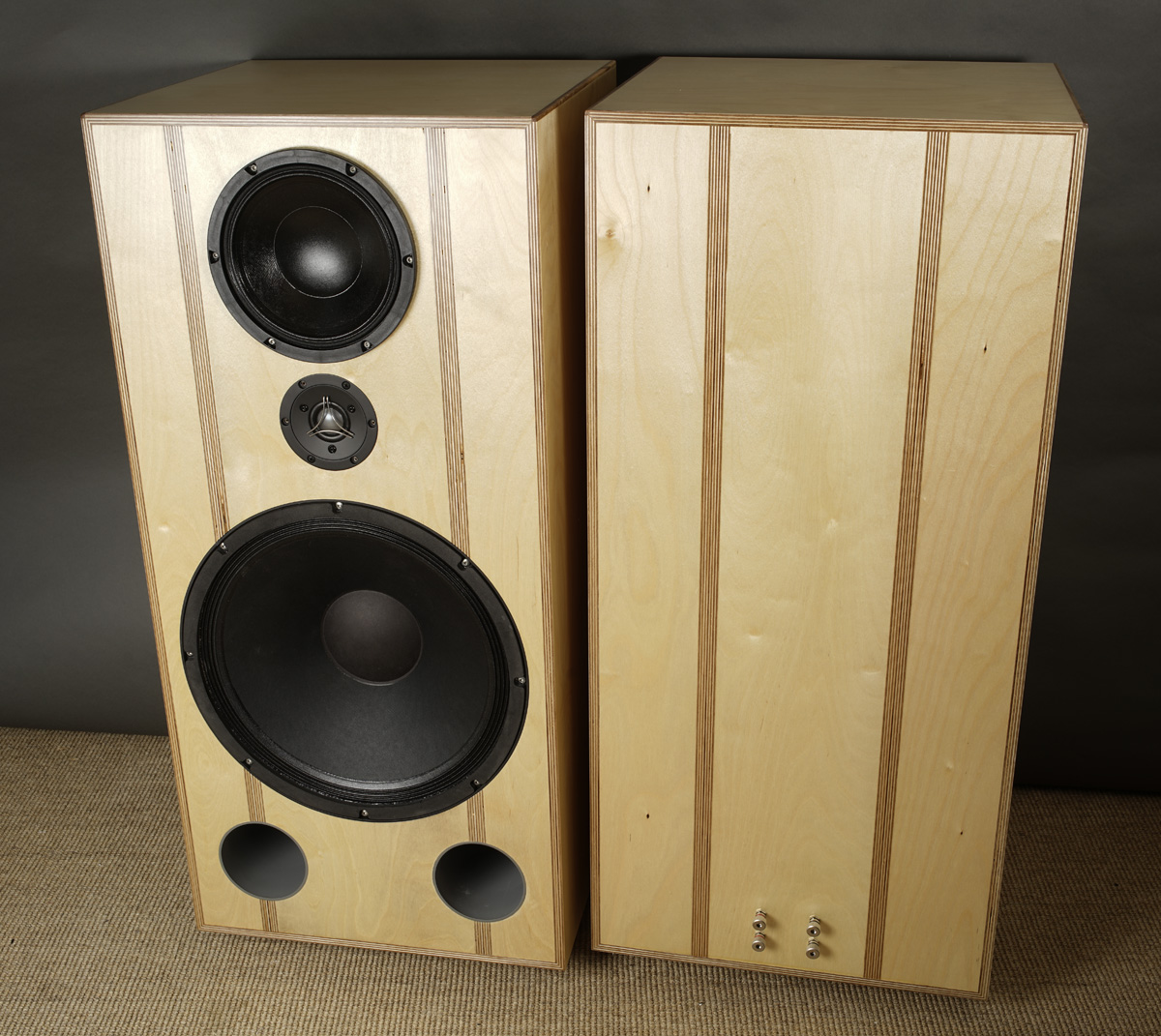
The cabinets are meant to be placed on a ~4-5 cm stand. Shown below.
Basics:
3-driver speaker.
Dimensions: 45 x 42 x 96 cm, WxDxH.
System sensitivity: 95-96 dB/2.8V/1 meter.
Impedance: 4-8 Ohms, minimum 4.6 Ohms.
Point of crossover: 230 and 2800 Hz, 2nd order crossovers (LR2).
Power requirement: 15+ watts/channel.
Power handling: ~400 watts. Please
also read:
http://www.troelsgravesen.dk/power-handling.htm,
and remember any burned driver is a misused driver. The 400 watts is
based on the specified power handling of the bass driver.
Useful links (Please read before writing!):
http://www.troelsgravesen.dk/tips.htm
http://www.troelsgravesen.dk/crossovers.htm
http://www.troelsgravesen.dk/LCR-RC.htm
http://www.troelsgravesen.dk/Inverted-Polarity.htm
FAQ (Please read before writing!):
You cannot change cabinet front panel dimensions and drivers' placement
without needing a new crossover - and I cannot help.
You cannot use any other drivers with the crossover specified.
http://www.troelsgravesen.dk/crossovers.htm
http://www.troelsgravesen.dk/choices.htm
Download specs:
SBAcoustics
TW29BN-B-8 (8 Ohms)
TW29RN-B-8 (8 Ohms) 18 SOUND
8NMB420 (8 Ohms) Faital
15PR400
(8 Ohms)
18 SOUND mid-drivers available from LEAN, UK.
SBA tweeter of your choice comes with the kit from Jantzen Audio.
18 SOUND 8NMB420 also available from Thomann DE:
https://www.thomann.de/gb/eighteensound_8nmb420_8_ohm.htm
I've found the 8NMB420 in stock in many places, so google 8NMB420/8 and
see what pops up.
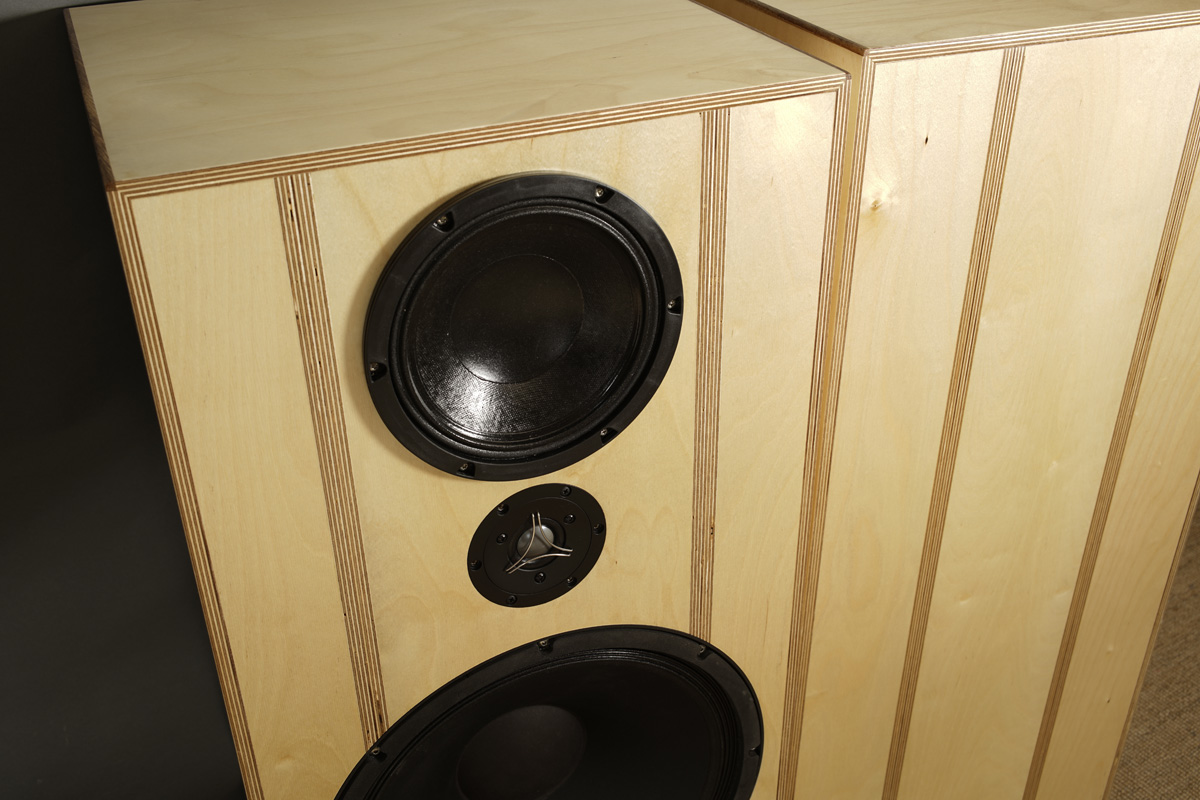
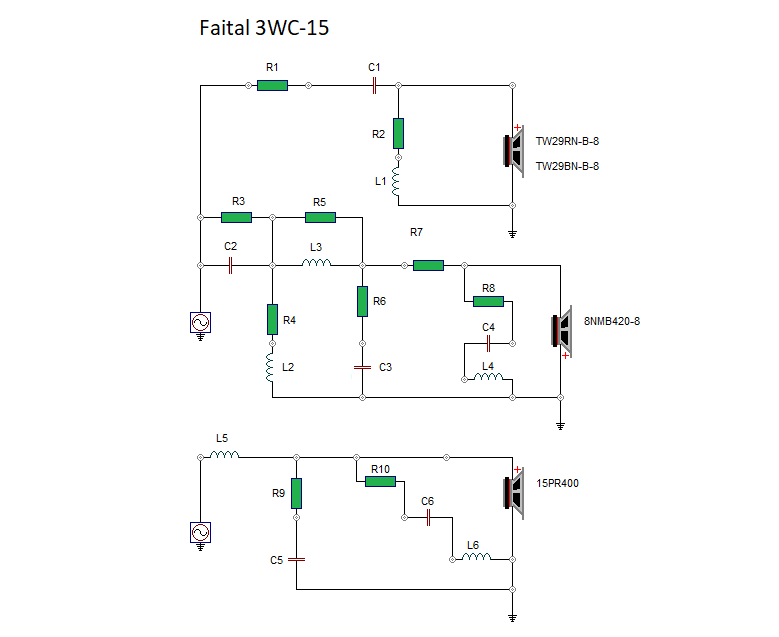
Crossover features a simple LR2 filter. R9/C5/L5 is an LCR circuit linearising upper impedance peak of the bass allowing proper
functioning of the low-pass filter. Without it we would have an
artificial bump around 80-100 Hz and furthermore we now have an amp-friendly final system impedance.
There are two versions of the crossover depending on tweeter choice. For
the Be dome C1 is smaller than for the
fabric dome. Otherwise the crossovers are identical.
Cabinets are made from 20 mm Baltic birch. Brace dimensions are exact calculated
figures based on 20 mm panel thickness. Adjust to actual panels as e.g.
BB is very often 20-21 mm - or you may be using 19-22 mm MDF. Stick to
overall outer dimensions from 19-22 mm panels.
Ports are Ø100 x 200 mm length and can be placed to the front or to the
rear to your liking. Tubes supplied are 400 mm length. Cut in
two to ~200 mm length. Ports can be placed front or rear. If I put them
one way, I sure someone will want the other way.
The ports I used were 100 mm drainage pipe,
which is Ø110 mm, and apparently what EBEL Holztechnik delivers, so if
you order cabinets from EBEL Holztechnik, make sure he makes holes Ø
104.5 mm to match the tube supplied.
Height of feet/base plate should be adjusted to your listening height so that you optimally listen at at height perpendicular to the center of the midrange driver.
Flat-pack cabinets made from Baltic birch are available from Ebel Holztechnik, Germany
https://www.ebelholztechnik.de/galerien/index.php/category/366-faital_3wc_15
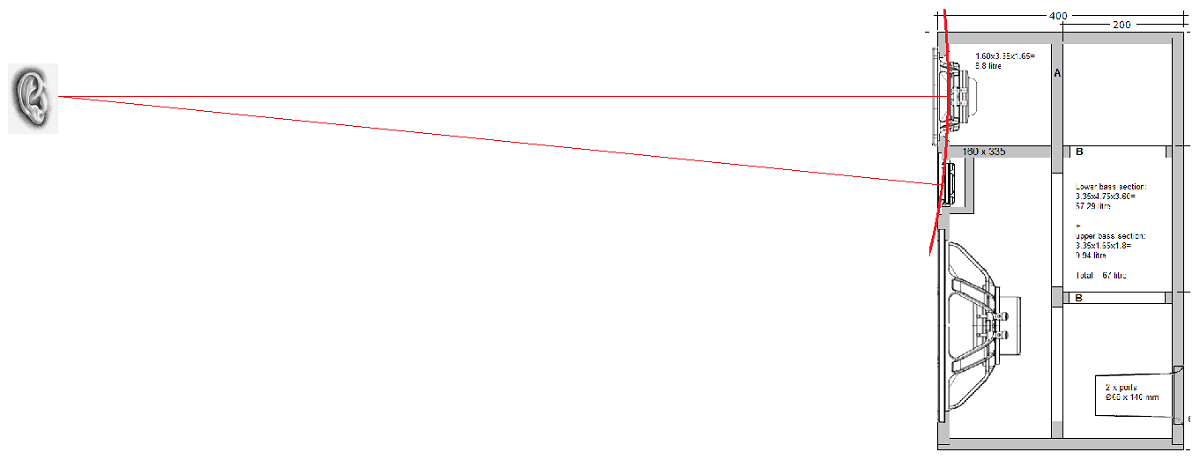
The reason for having the midrange driver not flush-mounted and on top of the tweeter is to take advantage of the above alignment, assuming listening height on midrange on-axis. This way we can avoid a stepped baffle making an overall easier cabinet construction.
Workshop images
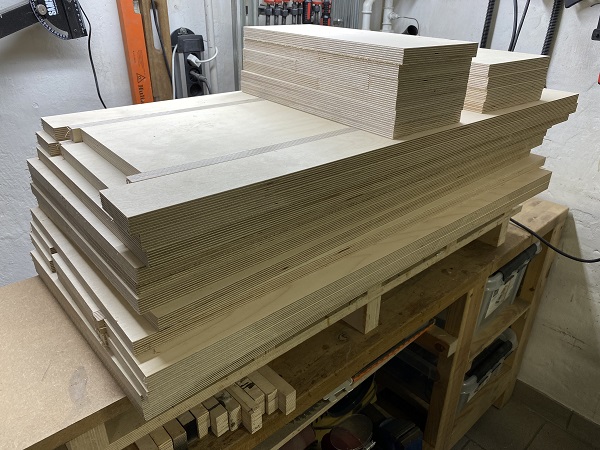
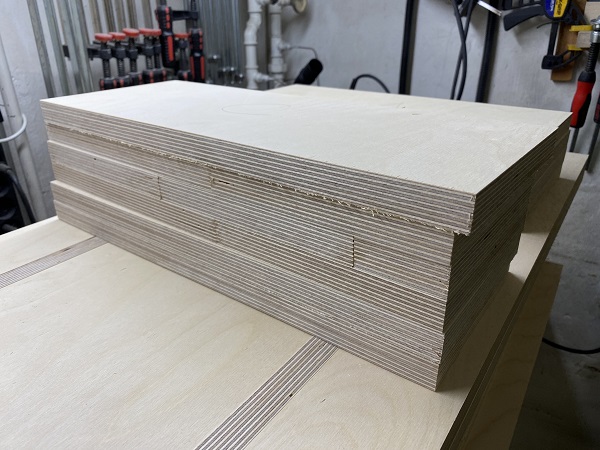
All parts cut to ~+1 cm. Most of the bracings were made from leftovers
glued together and cut to size.
This speaker takes quite some square meters of panel, so no need to
waste more than necessary and you really don't have to use Baltic birch
for bracing. MDF or cheaper plywood can be used.
Next step is adding first coat of lacquer to sides, top and bottom, front
and rear before gluing. This reduce edge ripping and the
outer veneer being soaked with glue and leaving light spots when the
final lacquer finish is applied.
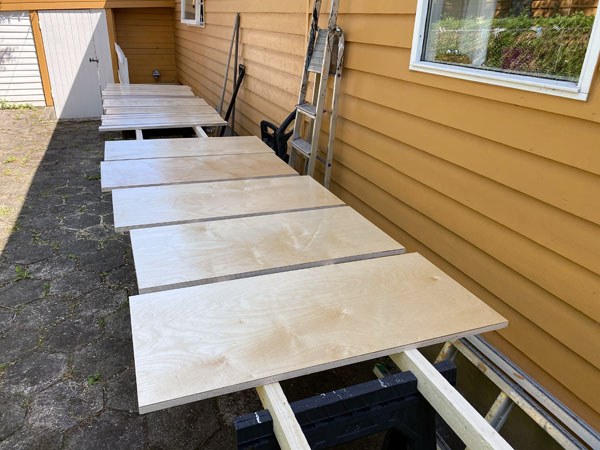
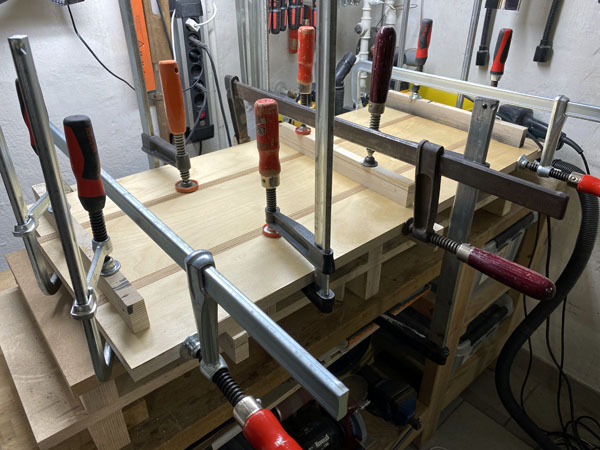
Left: 1st coat of lacquer and fortunately a hot summer's day for drying
in the shade.
Right: Gluing front and rear panels.
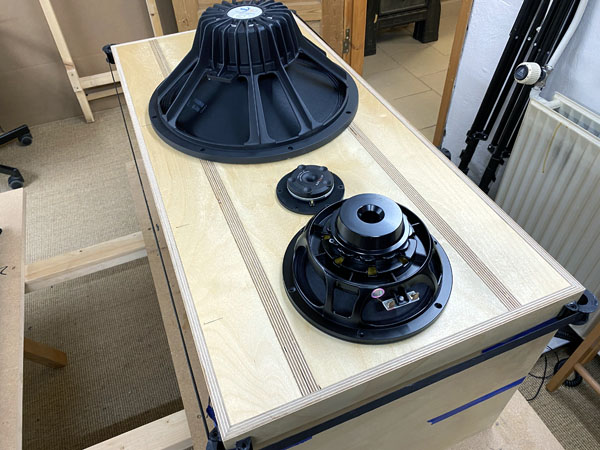

Testing layout and routing started.
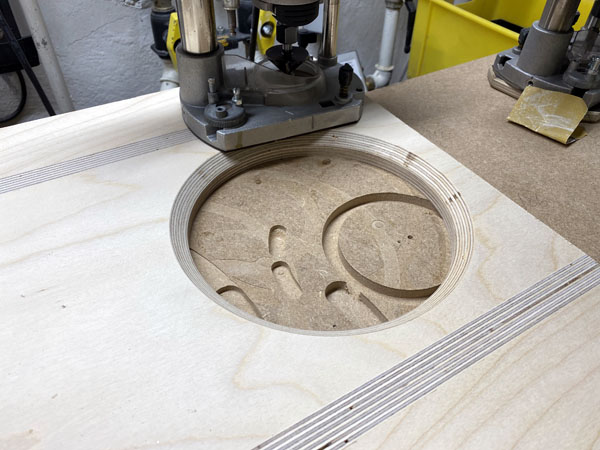
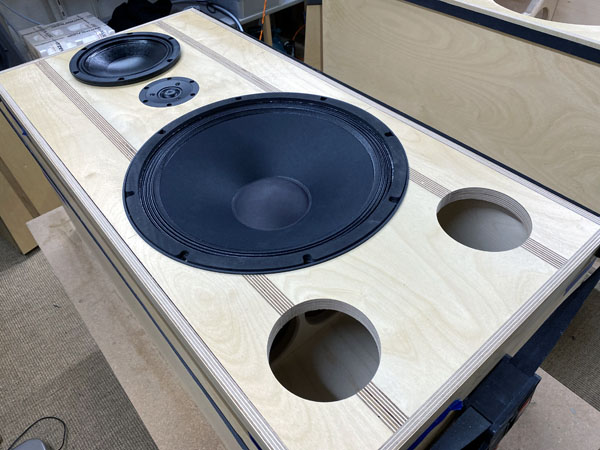
Chamfer midrange driver hole!! 45 deg. and half depth.
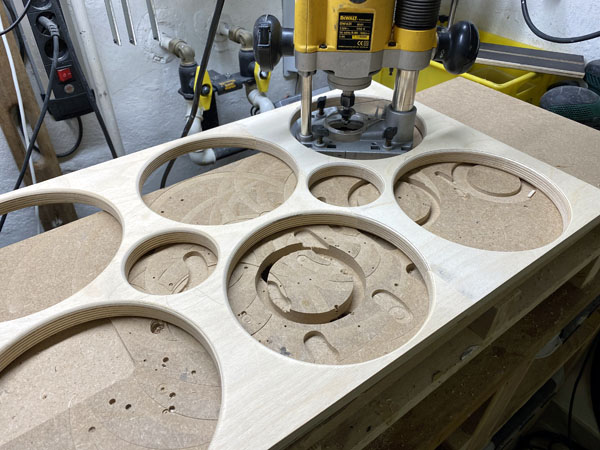
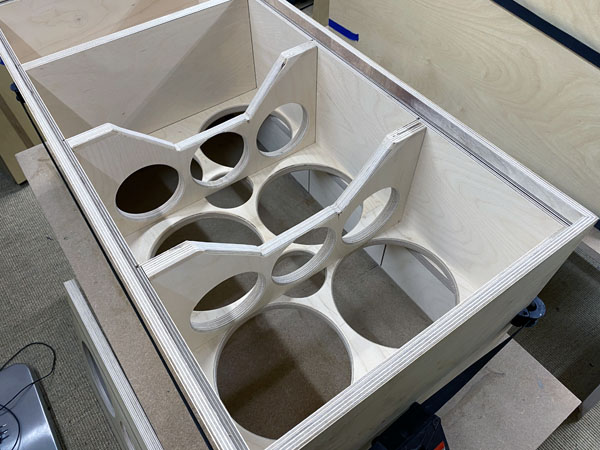
Making center vertical bracing and braces around bass driver.
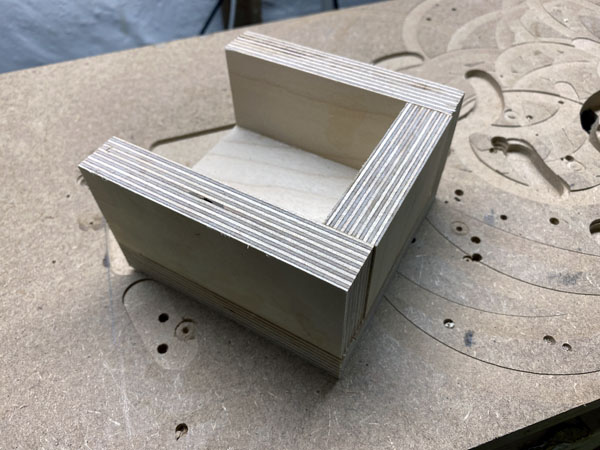
The tweeter protection housing.
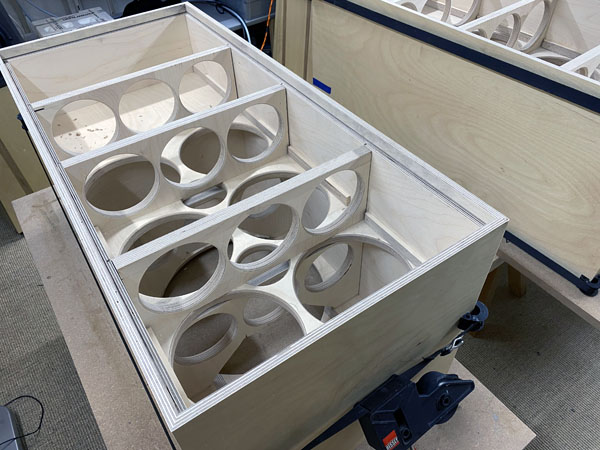
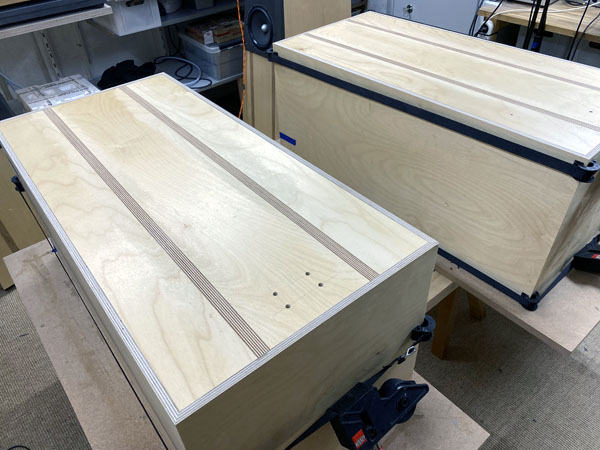
Rear horizontal bracings and rear panel in place. Time for adding felt
to rear
chambers - and for gluing!
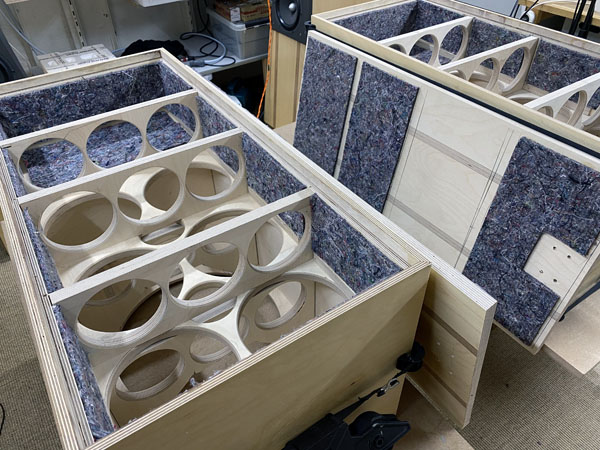
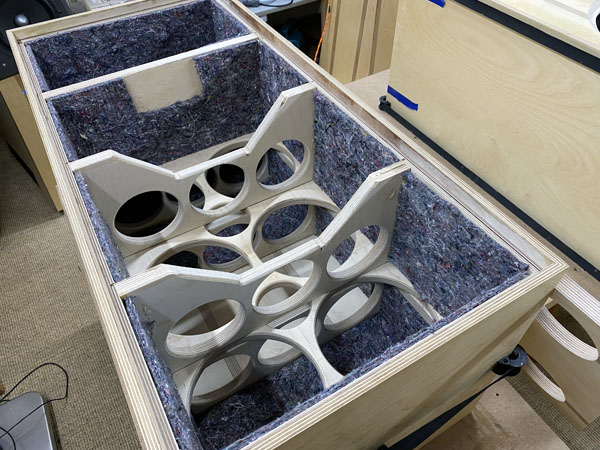
Left: Felt in rear section. Right: Felt in front section.
Leave rear panel behind bass driver free for crossover mounting.

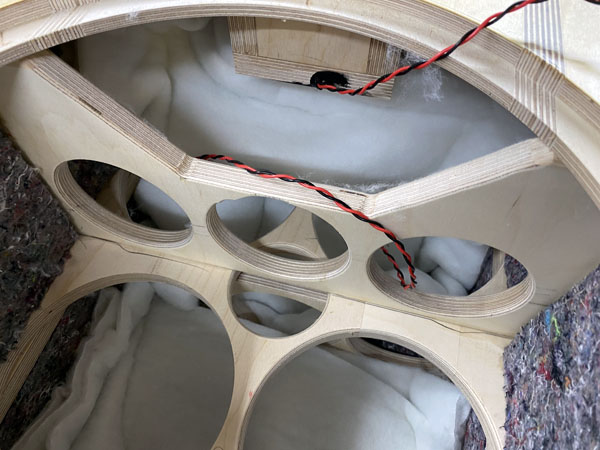
Cut 5 pieces of 80 x 50 cm acoustilux and make 4 rolls or folds and place as seen
on drawing below.
Crossover is placed behind bass driver on rear panel. Fold 1 piece of 50
x 80 cm acoustilux and place above crossover.
Add 350 grams of sheeps wool to the midrange cabinet and disperse
evenly.
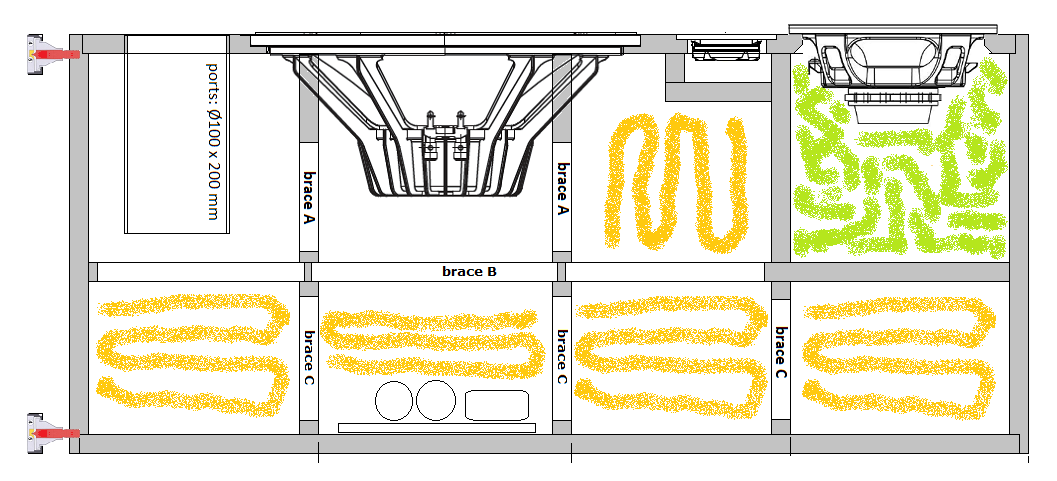
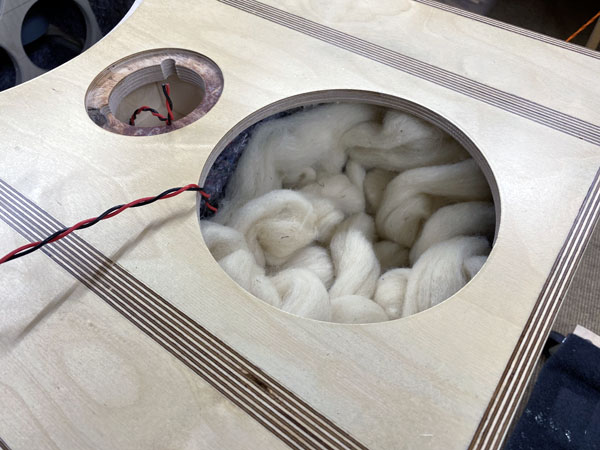
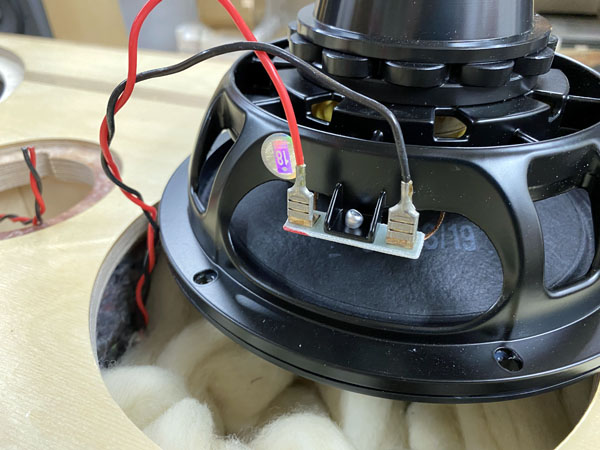
Midrange cabinet is filled with 350 grams sheeps' wool.
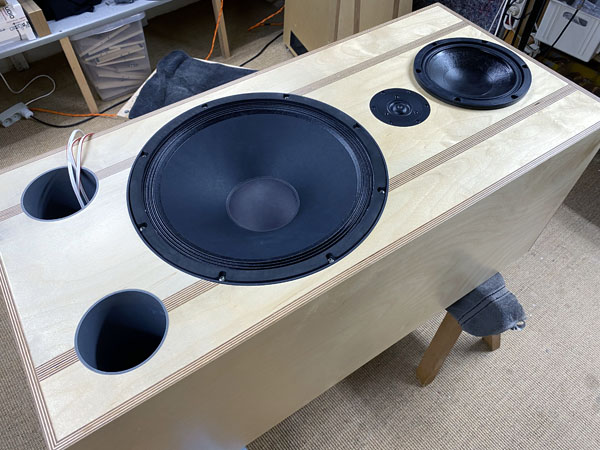
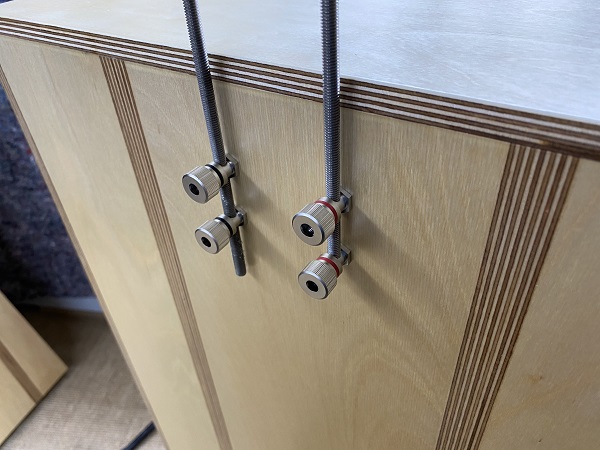
All drivers mounted and wires for crossover fine-tuning in place.
To align the binding posts while tightening the nuts inside I inserted
rods.

30x40 mm oak bars for feet. Work done!

First crossover fine-tuning in workshop.
A few comments on
MEASUREMENTS before you start interpreting the readings below.
First of all, if we think measurements will
tell us how a speaker sounds, we're wrong. The perception of sound is
way too subjective to be reflected in any measurements we can perform. A
loudspeaker system is meant to give us a satisfying idea of an acoustic
event and for some people a pair of 5 USD ear-plugs are enough, others
spend 200 kUSD on a truly full-range pair of speakers - and the latter
may not be happier than the former.
Measurements may give us an idea of tonal balance of a system, i.e. too
much or too little energy in certain areas, although dispersion
characteristics play a vital role here. A two-way 7+1 and a three-way
7+4+1 may display similar horizontal dispersion, yet sound very
different. Measurements may tell us about bass extension if far-field
measurements are merged with near-field measurements. In addition to
this, ports may contribute to bass extension. Most of we diy'ers do not
have access to an anechoic room for full-range measurements from
20-20000 Hz.
What cannot be seen is what kind of bass performance we get in a given
room. Bass performance is highly dependent on in-room placement of your
speaker and the same speaker can be boomy in one place and lean in
another. Actual SPL level at 1 meter distance and 2.8V input is useful
for en estimate of system sensitivity and combined with the impedance
profile may give an idea of how powerful an amplifier is needed to drive
the speaker to adequate levels.
What measurements do not tell is the very sound of the speaker unless
displaying serious linear distortion. The level of transparency, the
ability to resolve micro-details, the "speed" of the bass, etc., cannot
be derived from these data. Distortion measurements rarely tell much
unless seriously bad, and most modern drivers display low distortion
within their specified operating range.
Many people put way too much into these graphs and my comments here are
only meant as warning against over-interpretation. There are more to
good sound than what can be extracted from a few graphs. Every graph
needs interpretation in terms of what it means sonically and how it
impacts our choice of mating drivers, cabinet and crossover design.
What measurements certainly do not tell is the sonic signature of the
speaker, because speaker cones made from polypropylene, aluminum,
Kevlar, paper, glass fiber, carbon fiber, magnesium, ceramics or even
diamonds all have their way of adding spices to the stew. Nor do
measurements tell what impact the quality of the crossover components
add to the sound, from state of the art components to the cheapest of
coils and caps, they all measure the same if values are correct, yet
sound very different.
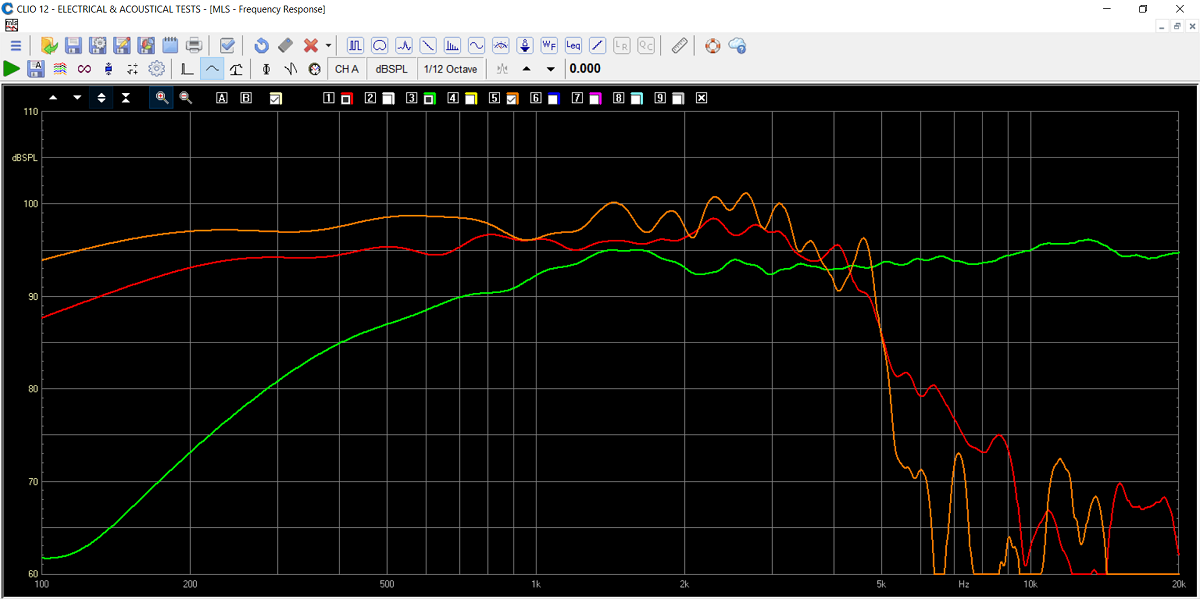
Response from all drivers on actual baffle, green = TW29RN-B-8.
The 15PR400 display some 97-98 dB sensitivity in middle/upper midrange
and can be tuned to a system sensitivity of 95-96 dB/2.8V/1 meter. This
speaker can be driven to thunderous level with solid bass from my 32 wpc
EAR-861 tube amp.
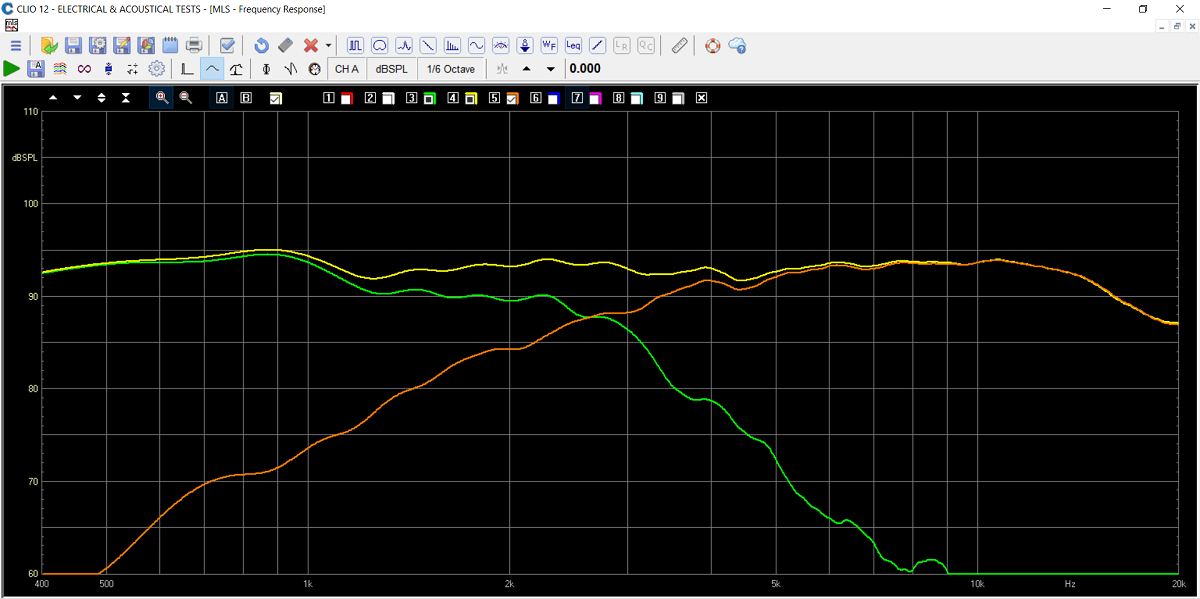
Response of midrange and Be dome driven from crossover.
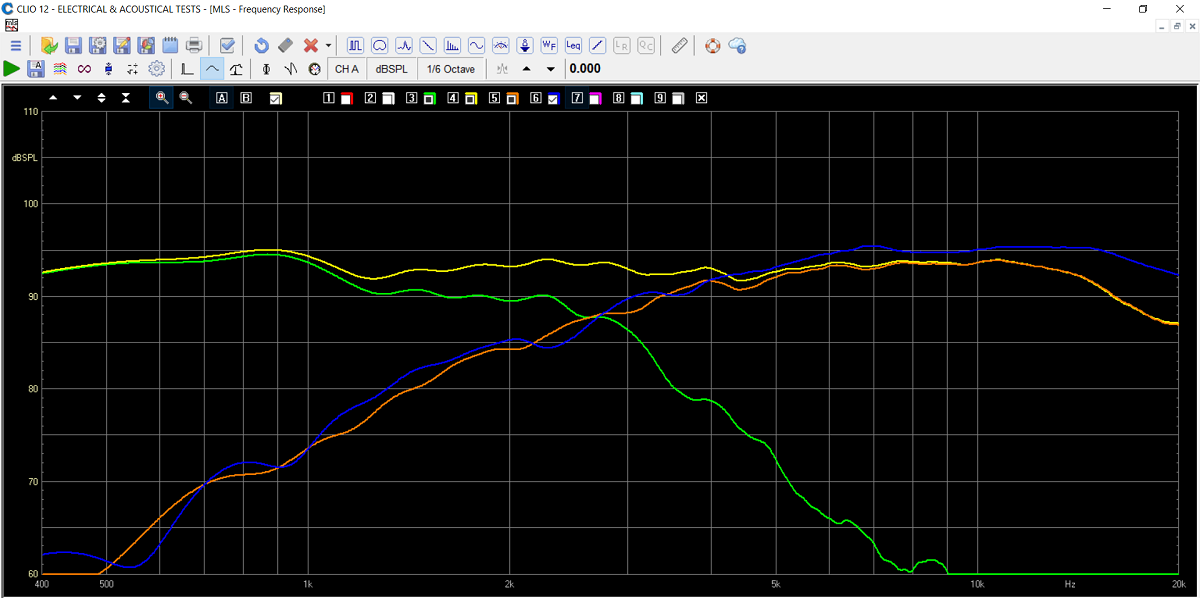
Don't worry about the Be dome roll-off above 15 kHz, on-axis more
straight.
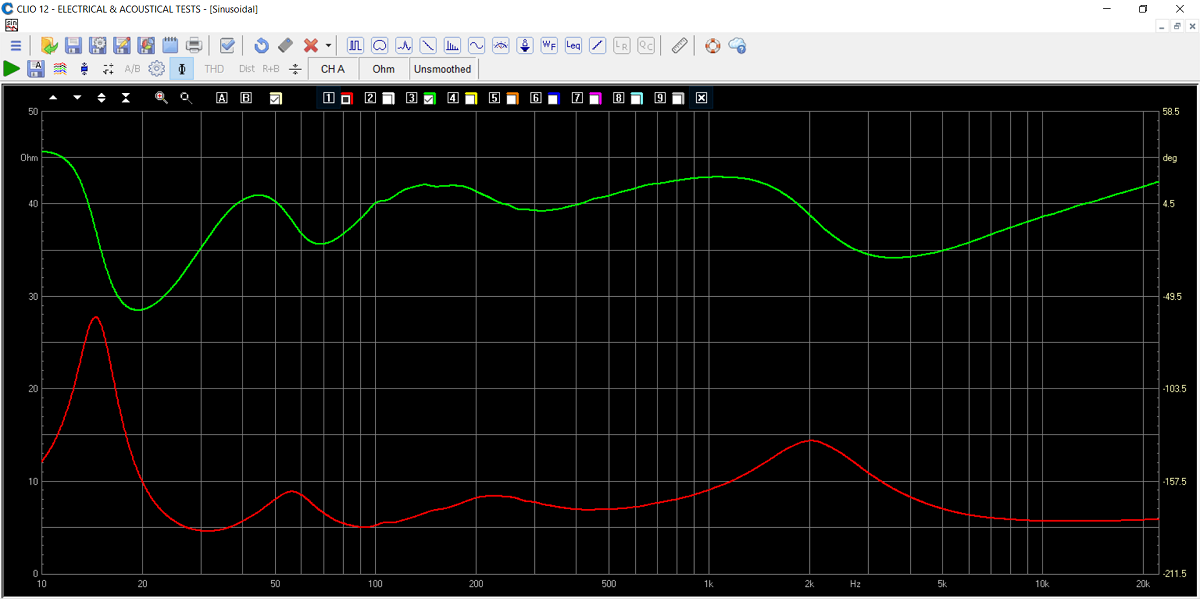
Final system impedance. Minimum 4.6 Ohms @ 32 Hz. This the Be-dome
version.
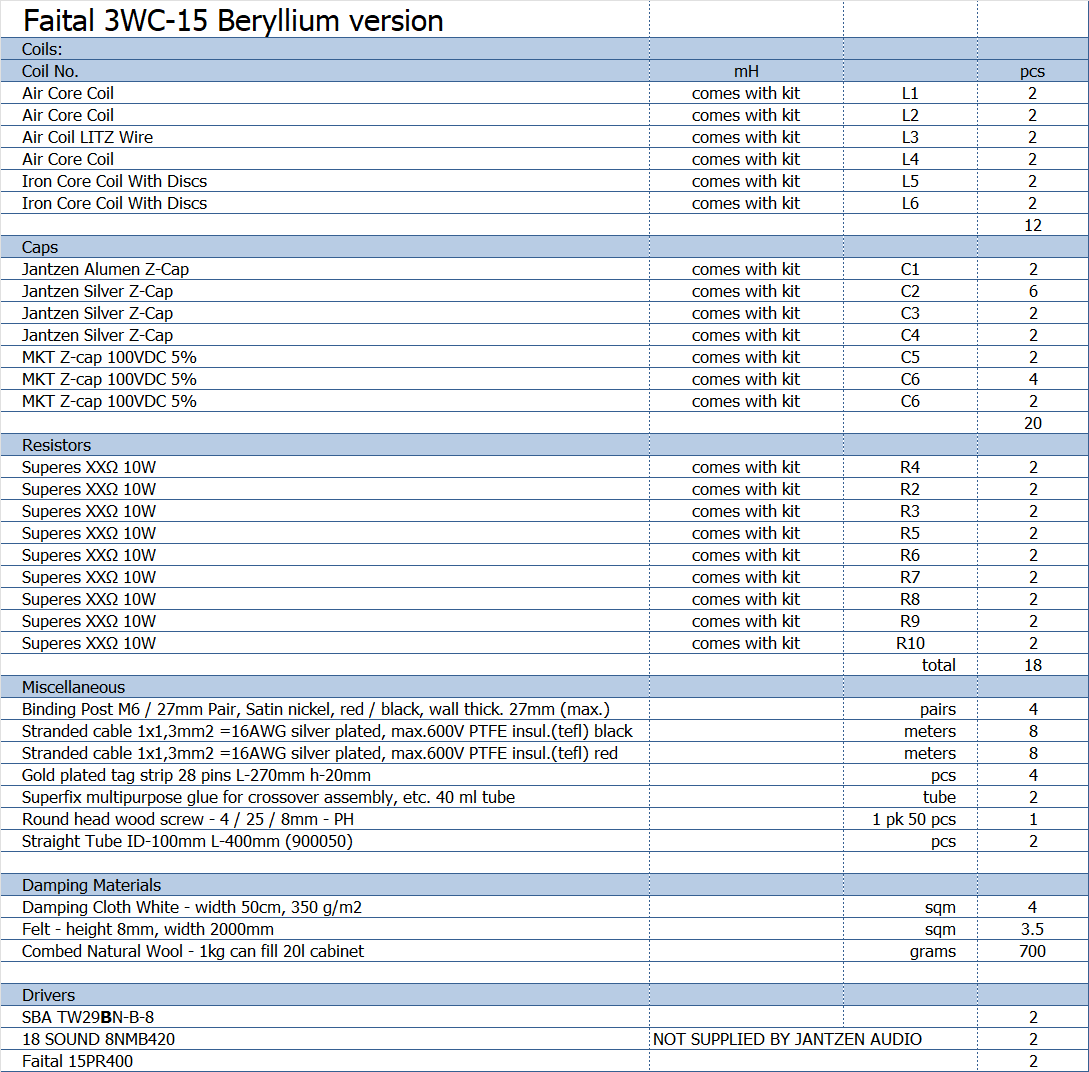
Above speaker kit for Be dome.
There are three options:
1: Be dome, TW29BN-B-8, Alumen-Z for tweeter and Silver-Z for midrange
2: Fabric dome, TW29RN-B-8, Alumen-Z for tweeter and Silver-Z for
midrange
3. Fabric dome, TW29RN-B-8, Silver-Z for dome, and mix of Silver-Z and
STANDARD-Z for midrange.
EUROPE:
18 SOUND drivers available from
LEAN, UK.
US:
18 SOUND 8NMB420 available from e.g.
Loudspeakers Plus.
SBA tweeter, being fabric or Beryllium and
Faital drivers, come with the kit from
Jantzen Audio.
All kit and component prices may be subject to
change and are always to be confirmed by Jantzen Audio Denmark.
Kits can be ordered with/without drivers or some of the drivers.
Download Complete Kit Sale Presentations:

All technical questions to troels.gravesen@hotmail.com
All questions regarding purchase of kits, please mail Jantzen Audio at contact@jantzen-audio.com
CROSSOVER-LAYOUT
BACK TO INDEX
Check this out before start making crossovers:
http://www.troelsgravesen.dk/tips.htm#CONSTRUCTION_OF_CROSSOVERS
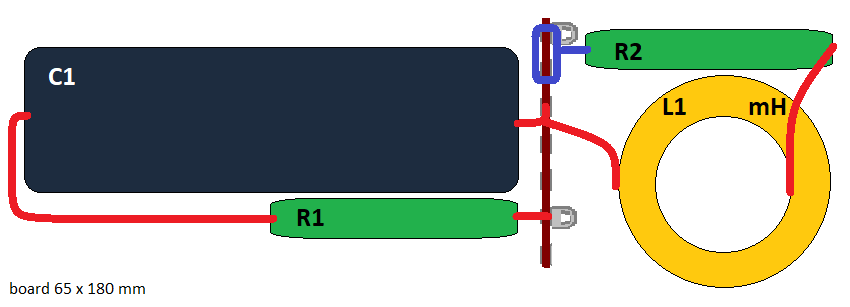
Above tweeter crossover layout.
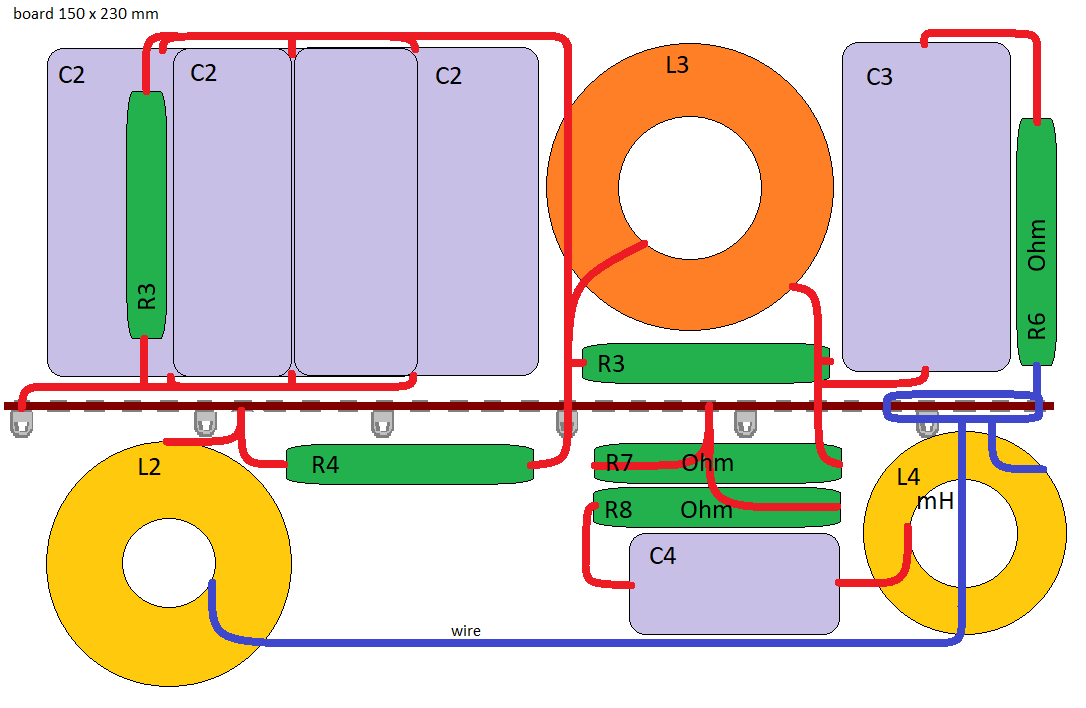
Above midrange crossover layout.
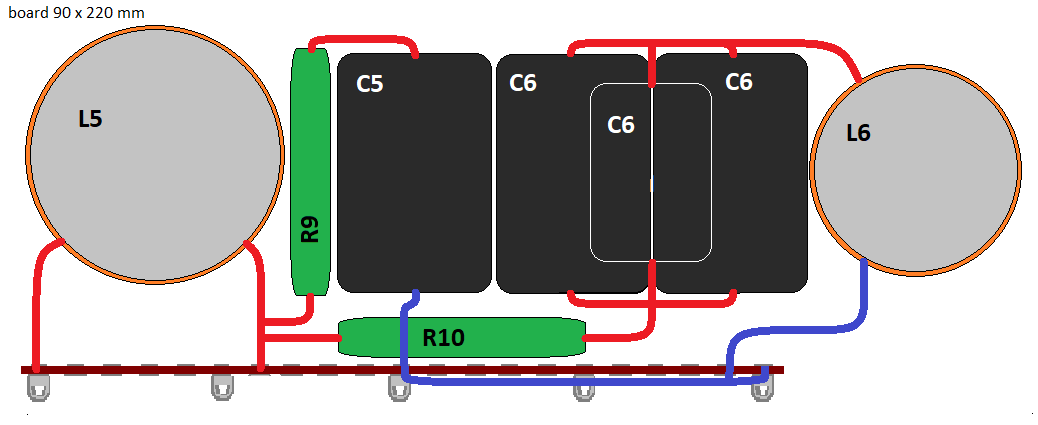
Above bass crossover layout.
Since introduction, the Premium-ELKOs have been replaced by MKT-Z caps.
Same layout.
Click images below to view large.
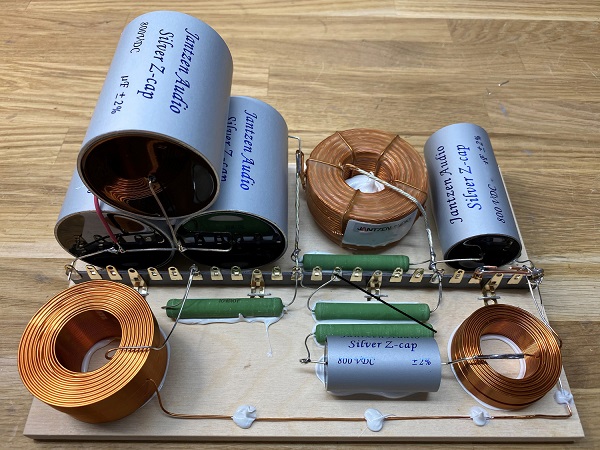
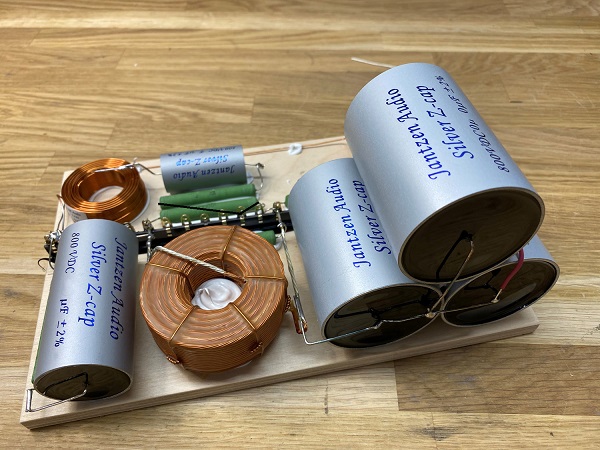
Midrange crossover. Sorry for the correction to R8. Just follow the
drawings carefully.
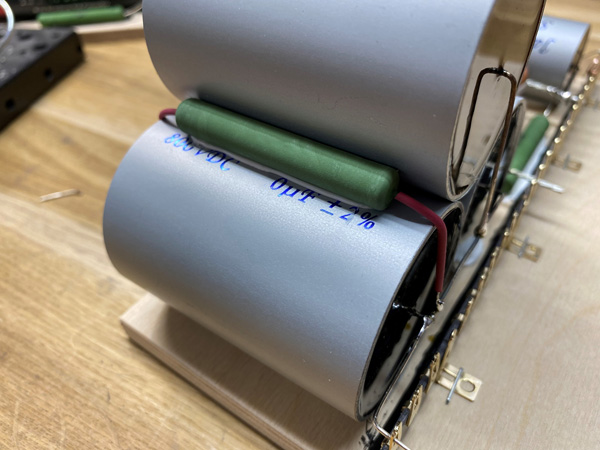
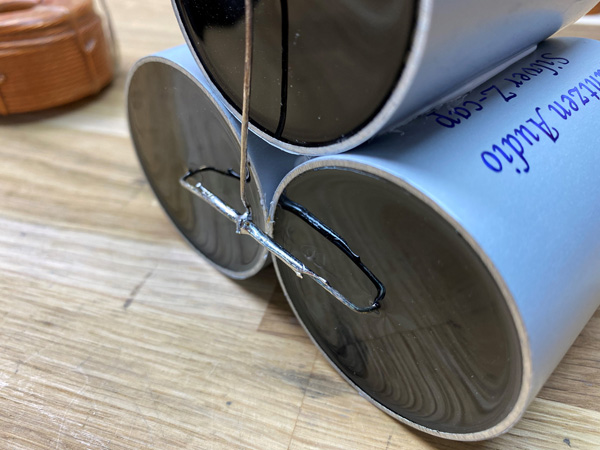
Left: Make sure the by-pass resistor (R3) is not shorting the capacitors
by having the leads touching the capacitor alu tube.
Right: Make sure the capacitor leads are not touching the alu tubes
either.
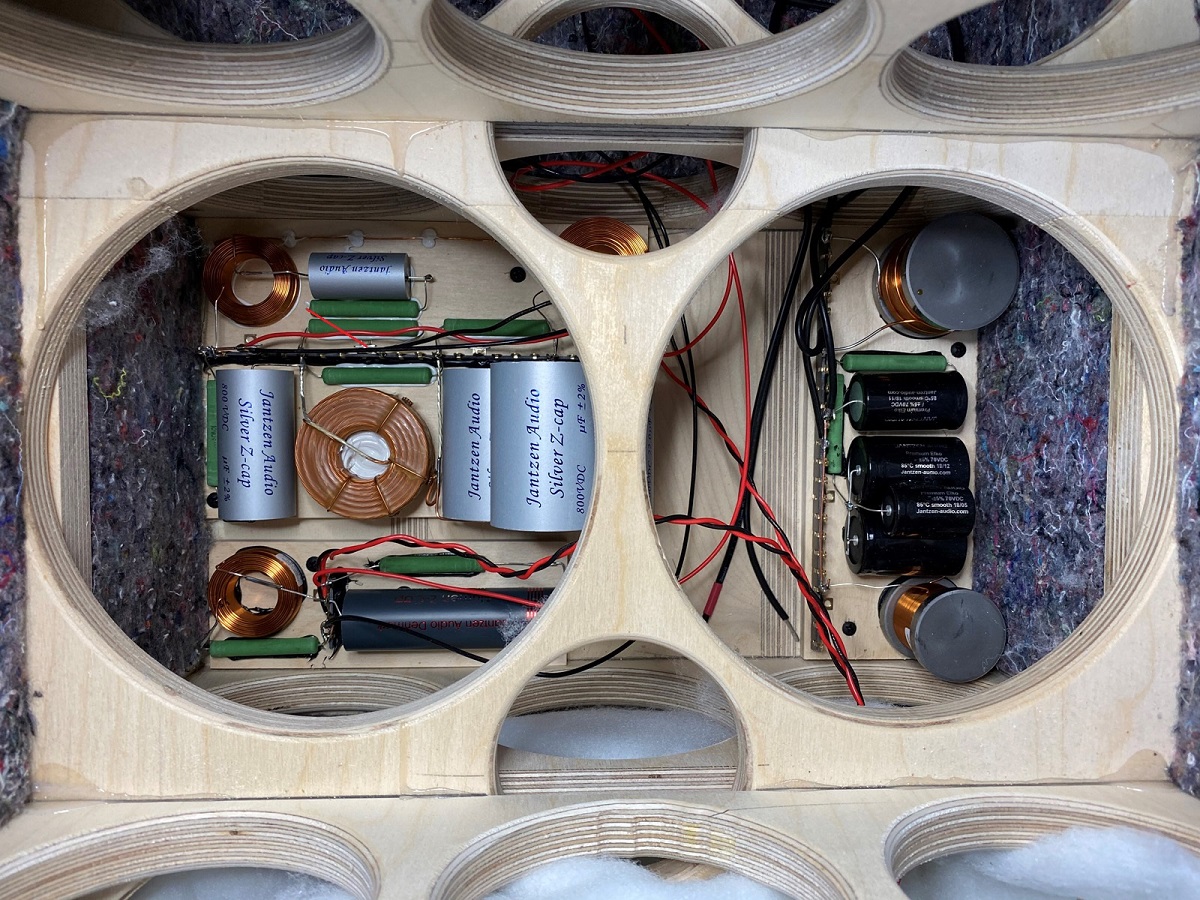
The finished crossovers in cabinet.

Speaker wiring from double binding posts.
